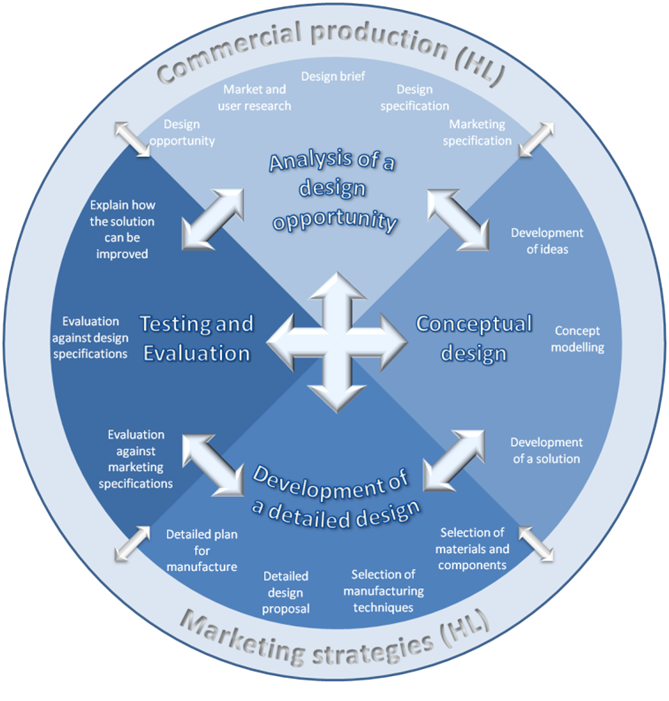
Design Cycle Prezi
Grading Criteria
Criterion A – Analysis of a design opportunity
- Describes an appropriate problem that leads to a design opportunity
- Develops a detailed brief that identifies the relevant parameters of the problem
- Develops a design specification that justifies the requirements, based on the outcomes of the research
Criterion B – Conceptual design
- develops feasible ideas to meet appropriate specifications that explore solutions to the problem
- uses concept modelling and analyses the outcomes to guide design development
- justifies an appropriate idea for detailed development.
Criterion C – Development of a detailed design
- justifies the choice of appropriate materials, components and manufacturing techniques to make the prototype
- develops an accurate design proposal in sufficient detail for a third party to manufacture the prototype
- produces a detailed plan for the manufacture of the prototype.
Criterion D – Testing and Evaluation
- justifies a testing strategy to measure the success of the prototype
- evaluates the success of the prototype against the design specification
- demonstrates how the prototype could be improved, considering how individual improvements affect the design as a whole.
Criterion E – Detailed development of a commercial product (only HL)
- develops the design, addressing the required modifications for a commercially viable production process
- presents the developed commercial product comprehensively
- develops an accurate design proposal of the commercial product in sufficient detail for a third party to manufacture the product.
Criterion F – Making choices for commercial production (only HL)
- justifies the choice of materials and components appropriate for commercial production
- justifies an appropriate scale and volume of production, based on appropriate research and suitability for the product.
- justifies the choice of manufacturing techniques appropriate for commercial production